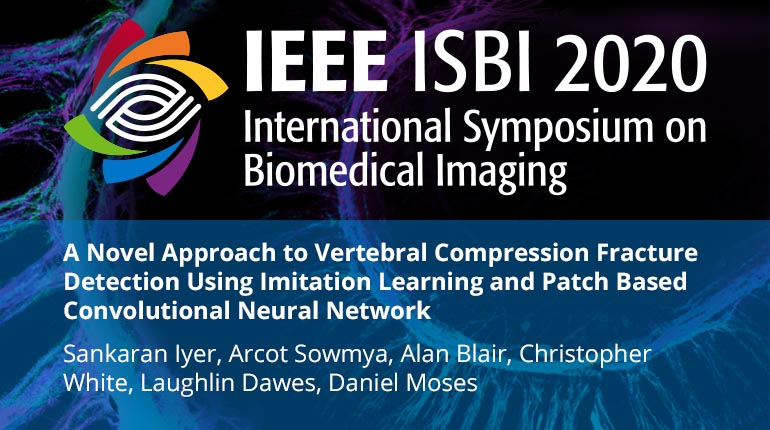
Already purchased this program?
Login to View
This video program is a part of the Premium package:
A Novel Approach to Vertebral Compression Fracture Detection Using Imitation Learning and Patch Based Convolutional Neural Network
- IEEE MemberUS $11.00
- Society MemberUS $0.00
- IEEE Student MemberUS $11.00
- Non-IEEE MemberUS $15.00
A Novel Approach to Vertebral Compression Fracture Detection Using Imitation Learning and Patch Based Convolutional Neural Network
Compression Fractures in vertebrae often go undetected clinically due to various reasons. If left untreated, they can lead to severe secondary fractures due to osteoporosis. We present here a novel fully automated approach to the detection of Vertebral Compression Fractures (VCF). The method involves 3D localisation of thoracic and lumbar spine regions using Deep reinforcement Learning and Imitation Learning. The localised region is then split into 2D sagittal slices around the coronal centre. Each slice is further divided into patches, on which a Convolutional Neural Network (CNN) is trained to detect compression fractures. Experiments for localisation achieved an average Jaccard Index/Dice Coefficient score of 74/85% for 144 CT chest images and 77/86% for 132 CT abdomen images. VCF Detection was performed on another 127 chest images and after localisation, resulted in an average fivefold cross validation accuracy of 80%, sensitivity of 79.87% and specificity of 80.73%.
Compression Fractures in vertebrae often go undetected clinically due to various reasons. If left untreated, they can lead to severe secondary fractures due to osteoporosis. We present here a novel fully automated approach to the detection of Vertebral Compression Fractures (VCF). The method involves 3D localisation of thoracic and lumbar spine regions using Deep reinforcement Learning and Imitation Learning. The localised region is then split into 2D sagittal slices around the coronal centre. Each slice is further divided into patches, on which a Convolutional Neural Network (CNN) is trained to detect compression fractures. Experiments for localisation achieved an average Jaccard Index/Dice Coefficient score of 74/85% for 144 CT chest images and 77/86% for 132 CT abdomen images. VCF Detection was performed on another 127 chest images and after localisation, resulted in an average fivefold cross validation accuracy of 80%, sensitivity of 79.87% and specificity of 80.73%.
 Cart
Cart Create Account
Create Account Sign In
Sign In





